Tesla owners will have access to fully automated, Level 5 autonomous electric vehicles sometimes this year. No humans will need to be involved, except for being passengers. That’s according to comments made by CEO Elon Musk a few days ago from a video released at a Chinese AI conference.
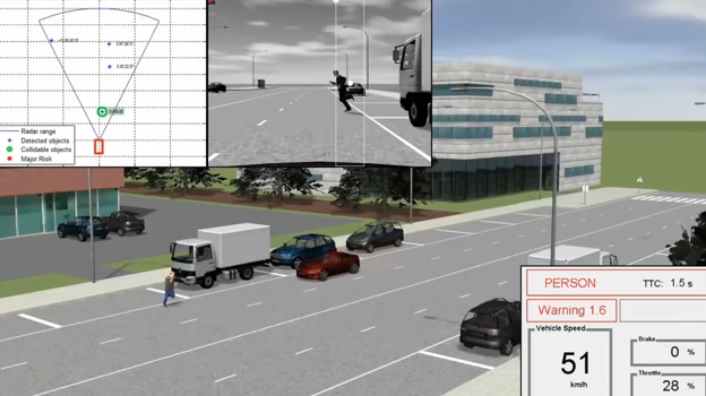 “I remain confident that we will have the basic functionality for level five autonomy complete this year,” Musk said. “I think there are no fundamental challenges remaining for level five autonomy.”
“I remain confident that we will have the basic functionality for level five autonomy complete this year,” Musk said. “I think there are no fundamental challenges remaining for level five autonomy.”
The problem would be: Where could Tesla owners legally ride in their autonomous EV beyond a limited test run — most of which would not allow them to be the ones riding in that test car?
Australia, Canada, China, Germany, New Zealand, the United Kingdom and the US have government-sponsored programs and policies in place for testing and developing AVs. None of these countries have yet allowed these vehicles to be deployed at scale. In the US, 40 states have enacted legislation, or have received governor executive orders, on autonomous vehicles. None of them have allowed them to be driven beyond the testing phase; or in limited applications, such as Waymo’s autonomous rides in Arizona.
As for now, AV activities have been put on hold. After COVID-19 hit hard in March, AV companies such as Argo, Aurora, Cruise, Pony, and Waymo, suspended vehicle testing and operations that involved a human driver. Around the same time, Waymo and Ford released open data sets of information collected during AV tests. The two companies challenged developers to use them to come up with faster and smarter self-driving systems.
AVs are years behind robotics being used in manufacturing plants, and for air and sea drones used by the military and other entities such as NOAA (more on this later).
Carnegie Mellon University has always played a leading role participating in AV test projects. A new study has taken a look at another angle — the connection between AVs and electric vehicles. Researchers from the university recently published a paper in the Nature Energy journal. They found that certain parts of the AV ride cycle can drain car batteries, but fixes made to software and hardware should make fleets of electric AVs possible.
“A bunch of commentators used to suggest the first AVs might have to be gas hybrids,” says Shashank Sripad, a PhD candidate in mechanical engineering at Carnegie Mellon who worked on the paper. “But we believe that, if we want to do electric vehicles, autonomy will be compatible with it.”
That probably referred to the Toyota Priuses being used in the early stages of the study that was conducted near Google’s (now Alphabet’s) corporate campus in Mountain View, Calif. More recently with Waymo, that’s been taken over by the Chrysler Pacifica minivan.
Automakers are split on their support for Level 4 AVs, and what type of powertrain would be best to use. Ford plans to transition over to battery-powered self-driving cars, says an AV spokesperson for Ford. But if the company can stay on track and hit its original goal of rolling out an AV for service by 2022, it will be rolling out self-driving gas-electric hybrid vehicles.
Automakers have made big commitments to AVs in investments and research studies that will continue. Some of the more memorable deals include General Motor’s $1 billion acquisition of Cruise, Uber buying Otto for $680 million, Ford’s $1 billion Argo Ai investment, and Intel acquiring Mobileye for $15.3 billion.
Five years ago, several companies including Nissan and Toyota promised self-driving cars by this year, but that’s being delayed. AV stakeholders have started to revise their marketing and event messages on where it’s all going for now. Level 4 autonomous will be it for now.
Robotics are already here in production and assembly lines for several automakers and in other industries, with COVID-19 making the topic much more relevant with worker safety being factored in. Meat and poultry workers have been hit hard. In April and May, more than 17,300 meat and poultry processing workers in 29 states were infected and 91 died, according to the U.S. Centers for Disease Control and Prevention. Plant shutdowns started in late April.
Tyson Foods Inc. assembled a team, including designers once employed in the auto industry, working on a deboning system that could make more efficient and safe the procedures carried out in Tyson plants. The team is developing an automated deboning system designed to handle some of the roughly 39 million chickens slaughtered, plucked and sliced up each week in Tyson plants.
The company has invested about $500 million in technology and automation. CEO Noel White said those efforts likely would increase in the aftermath of the pandemic. It’s been chaotic for meat producers, grocery stores, and fast-food chains to keep the product in stores — with Americans having high expectations for buying meat.
On the drone side of the equation, the National Oceanic and Atmospheric Administration (NOAA) is launching a fleet of 30 gliders to study how the ocean affects hurricanes. It started in 2014 with two gliders used for tracking and measuring huge storms approaching coastal areas.
“We have gliders that have gone through two or three hurricanes already,” explained Gustavo Goni, a lead scientist at the Atlantic Oceanographic and Meteorological Laboratory in Miami, which is run by NOAA. “They are robust. They don’t even care. Some of them have even been in fights with sharks. We know this because we find sharks’ teeth in gliders when we recover them.”
The past six years has involved building up the floating, sensor-packed units. The first part was figuring out how to get them funded and set up to be sea worthy and long lasting. Then it had to train technicians on how to equip and use them.
Delivery drones have been another application for robotics, used by companies such as Workhorse Group and Amazon. Allowing human beings to go along for the rides in AVs will have to take a lot longer to work out safety, legal, and risk management issues.

 the plant’s construction, with the nickname of GiGA4Berlin. Tesla continues to work quickly through the COVID-19 crisis and inner turmoil over management turnovers. One theory is that CEO Elon Musk and team are learning big lessons from crafting two vehicle plants and one battery factory to produce four models to production scale (with the fifth, the Model Y,
the plant’s construction, with the nickname of GiGA4Berlin. Tesla continues to work quickly through the COVID-19 crisis and inner turmoil over management turnovers. One theory is that CEO Elon Musk and team are learning big lessons from crafting two vehicle plants and one battery factory to produce four models to production scale (with the fifth, the Model Y, 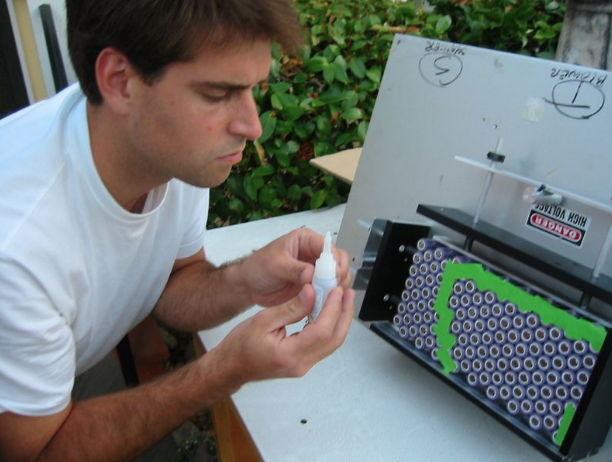 quarter. Straubel is credited with playing a pivotal role in the development of Tesla’s power systems and battery technology. The photo you see is of Straubel from 2004 in his backyard gluing lithium ion batteries to a case as part of the company’s first concept vehicle. Retiring at age 43, Straubel was still in his twenties when he became convinced that new and innovative li-ion batteries could become the power source for mass produced EVs. Straubel met Musk in 2003, when they had lunch in Los Angeles near the headquarters of Musk’s other passion in life — his rocket company, Space Exploration Technologies Corp. (SpaceX). Two other entrepreneurs, Martin Eberhard and Marc Tarpenning, were in on the early days of the company, working with Straubel and Musk to launch the company. Eberhard and Tarpenning left Tesla in 2008, as disputes came up over the future of the company — and as Musk exerted more control.
quarter. Straubel is credited with playing a pivotal role in the development of Tesla’s power systems and battery technology. The photo you see is of Straubel from 2004 in his backyard gluing lithium ion batteries to a case as part of the company’s first concept vehicle. Retiring at age 43, Straubel was still in his twenties when he became convinced that new and innovative li-ion batteries could become the power source for mass produced EVs. Straubel met Musk in 2003, when they had lunch in Los Angeles near the headquarters of Musk’s other passion in life — his rocket company, Space Exploration Technologies Corp. (SpaceX). Two other entrepreneurs, Martin Eberhard and Marc Tarpenning, were in on the early days of the company, working with Straubel and Musk to launch the company. Eberhard and Tarpenning left Tesla in 2008, as disputes came up over the future of the company — and as Musk exerted more control.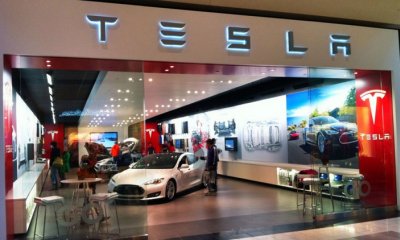 federal judge overseeing the case. The settlement means that CEO Elon Musk will be stepping down as chairman for three years, and that two new independent directors will be appointed to the board. Musk will be paying $20 million, and Tesla will pay another $20 million, in fines distributed to harmed investors. Musk’s insulting tweet last week on Thursday, mentioning that the SEC is changing its name to “Shortseller Enrichment Commission.”
federal judge overseeing the case. The settlement means that CEO Elon Musk will be stepping down as chairman for three years, and that two new independent directors will be appointed to the board. Musk will be paying $20 million, and Tesla will pay another $20 million, in fines distributed to harmed investors. Musk’s insulting tweet last week on Thursday, mentioning that the SEC is changing its name to “Shortseller Enrichment Commission.” new
new  that the company’s market valuation will be more than 10 times larger than it is today. The company announced that it has started a 10-year CEO performance package based entirely on the automaker’s market cap growing from the current level of $50 billion to more than $650 billion over the next decade. A similar program had been enacted in 2012, with Musk more than hitting the mark.
that the company’s market valuation will be more than 10 times larger than it is today. The company announced that it has started a 10-year CEO performance package based entirely on the automaker’s market cap growing from the current level of $50 billion to more than $650 billion over the next decade. A similar program had been enacted in 2012, with Musk more than hitting the mark.  being charged in 30 minutes. An even faster charge may be coming, too. The heavy-duty truck will be able to go zero to 60 in five seconds, and can hit 60 mph in 20 seconds with an 80,000 pound payload. Musk said that it will make a real difference in the commercial truck market with its cost savings and driver comfort features. It will also save truckers a lot in maintenance costs, with Musk expecting the trucks to not break down until they pass the one million mile mark. The Tesla chief also said that the semi truck will be able to work in a three-truck convoy, reducing its cost per mile for the fleet down to $0.85 per mile, versus diesel being at about $1.25 per mile. The truck was revealed in a larger, long-haul version and a day cab without a sleeper. Attendees at the event were also able to view a new version of the Tesla Roadster roll out of the semi’s trailer. The sports car now has a removable glass roof. Musk said the Roadster will be the fastest car in production on the market with a maximum speed of 250 mph; and the ability to go from 0 to 60 in 1.9 seconds. It can go up to 620 miles on a single charge, a record for production-level electric vehicles………. Toyota is thinking about
being charged in 30 minutes. An even faster charge may be coming, too. The heavy-duty truck will be able to go zero to 60 in five seconds, and can hit 60 mph in 20 seconds with an 80,000 pound payload. Musk said that it will make a real difference in the commercial truck market with its cost savings and driver comfort features. It will also save truckers a lot in maintenance costs, with Musk expecting the trucks to not break down until they pass the one million mile mark. The Tesla chief also said that the semi truck will be able to work in a three-truck convoy, reducing its cost per mile for the fleet down to $0.85 per mile, versus diesel being at about $1.25 per mile. The truck was revealed in a larger, long-haul version and a day cab without a sleeper. Attendees at the event were also able to view a new version of the Tesla Roadster roll out of the semi’s trailer. The sports car now has a removable glass roof. Musk said the Roadster will be the fastest car in production on the market with a maximum speed of 250 mph; and the ability to go from 0 to 60 in 1.9 seconds. It can go up to 620 miles on a single charge, a record for production-level electric vehicles………. Toyota is thinking about 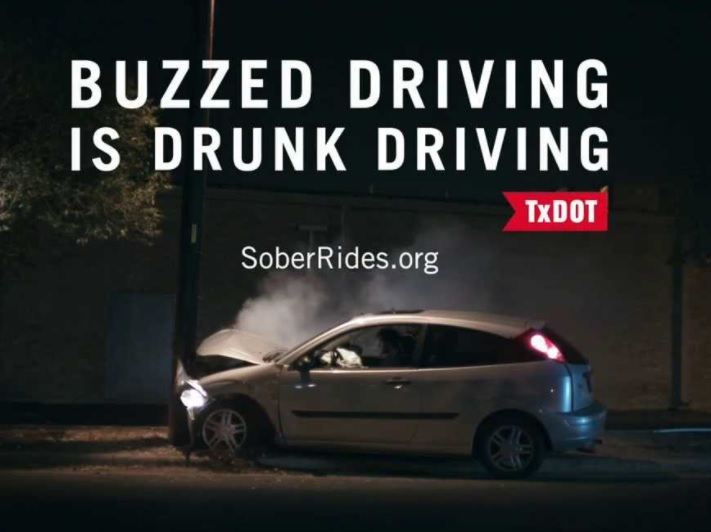 driving buzzed, and does it have anything to do with California and a few other states legalizing marijuana consumption? No, it has to do with a key issue state regulators and safety analysts bring up – the need to eliminate drunk driving and the necessity of bringing self-driving cars to U.S. roads. Buzzed driving refers to driving a car with a blood alcohol content (BAC) of .01% to .07%. That’s slightly under the .08% BAC standard used in most state’s drunk driving laws; but there’s been a great deal of concern that while .01% to .07% is legal for drivers, it can be just as dangerous as .08% or higher drunk driving for some of them. Self-driving cars are expected to dramatically reduce the highway fatality rate by taking away control of the car from drunk drivers being part of it. Drunk driving is still the leading cause of fatal crashes in the U.S. Last year was one of the worst ever, with an average of 20 people per day killed in DUI crashes. Safety experts have shared concerns about states legalizing marijuana and its possible side effects on road safety. That’s not measurable in a BAC standard used in drunk driving, but it may become part of state legislation in the future. Ride-hailing firms like Uber and Lyft have successfully tapped into concerns over drunk driving and see their rides as providing a solution to the problem. Uber and Lyft drivers have stories about riders expressing gratitude for their services, not having risked drunk driving after an evening at a night club or party. Mothers Against Drunk Driving (MADD) has been working with Uber in recent years to inform people that taking an Uber ride is much safer than getting behind the wheel after they’ve been drinking.
driving buzzed, and does it have anything to do with California and a few other states legalizing marijuana consumption? No, it has to do with a key issue state regulators and safety analysts bring up – the need to eliminate drunk driving and the necessity of bringing self-driving cars to U.S. roads. Buzzed driving refers to driving a car with a blood alcohol content (BAC) of .01% to .07%. That’s slightly under the .08% BAC standard used in most state’s drunk driving laws; but there’s been a great deal of concern that while .01% to .07% is legal for drivers, it can be just as dangerous as .08% or higher drunk driving for some of them. Self-driving cars are expected to dramatically reduce the highway fatality rate by taking away control of the car from drunk drivers being part of it. Drunk driving is still the leading cause of fatal crashes in the U.S. Last year was one of the worst ever, with an average of 20 people per day killed in DUI crashes. Safety experts have shared concerns about states legalizing marijuana and its possible side effects on road safety. That’s not measurable in a BAC standard used in drunk driving, but it may become part of state legislation in the future. Ride-hailing firms like Uber and Lyft have successfully tapped into concerns over drunk driving and see their rides as providing a solution to the problem. Uber and Lyft drivers have stories about riders expressing gratitude for their services, not having risked drunk driving after an evening at a night club or party. Mothers Against Drunk Driving (MADD) has been working with Uber in recent years to inform people that taking an Uber ride is much safer than getting behind the wheel after they’ve been drinking.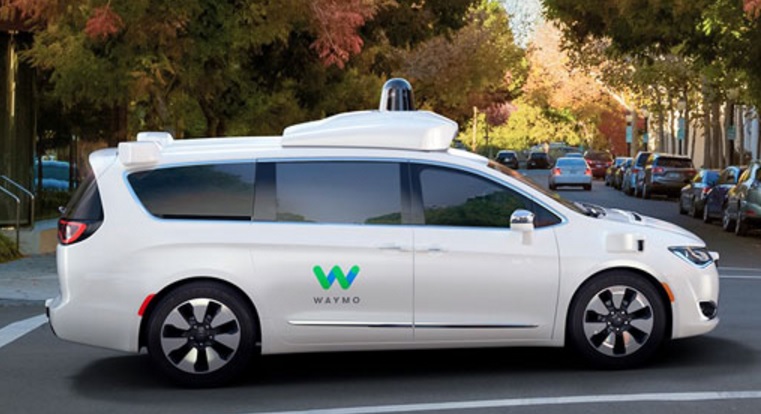 driving car technology. The federal judge in San Francisco hearing the trial has excluded Waymo’s damages expert, Michael Wagner, from the case; and has restricted use of financial evidence at the trial, according to a docket entry. Waymo claims that it has received damages worth about $1.9 billion in losses. Uber has denied using intellectual property that had allegedly been stolen by former Waymo engineer Anthony Levandowski. Waymo responded to the judge’s decision with a statement that it could still pursue full damages using “the same documents” relied upon by Wagner.
driving car technology. The federal judge in San Francisco hearing the trial has excluded Waymo’s damages expert, Michael Wagner, from the case; and has restricted use of financial evidence at the trial, according to a docket entry. Waymo claims that it has received damages worth about $1.9 billion in losses. Uber has denied using intellectual property that had allegedly been stolen by former Waymo engineer Anthony Levandowski. Waymo responded to the judge’s decision with a statement that it could still pursue full damages using “the same documents” relied upon by Wagner.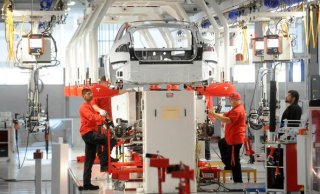 watched Model 3. Perbix, a maker of automated machines used for manufacturing, has been acquired by Tesla after nearly three years of working with the electric carmaker. Tesla has declined to disclose the cost of the acquisition and other details. Tesla will be expanding Perbix’ operations in the Minneapolis area, where the supplier is based. Tesla CEO Elon Musk has recently been making comments about the automation challenges holding up hitting the production timeline that had originally been set for the $35,000 Model 3. In other news, Jon Wagner, Tesla’s director of battery engineering, has left the company and is launching a battery and powertrain startup in California.
watched Model 3. Perbix, a maker of automated machines used for manufacturing, has been acquired by Tesla after nearly three years of working with the electric carmaker. Tesla has declined to disclose the cost of the acquisition and other details. Tesla will be expanding Perbix’ operations in the Minneapolis area, where the supplier is based. Tesla CEO Elon Musk has recently been making comments about the automation challenges holding up hitting the production timeline that had originally been set for the $35,000 Model 3. In other news, Jon Wagner, Tesla’s director of battery engineering, has left the company and is launching a battery and powertrain startup in California. near future. Mahindra had just lost a bid for a 10,000 EV contract with the government’s Energy Efficiency Services Limited agency to its main Indian competitor, Tata Motors. Mahindra was awarded part of the contract after lowering prices to match Tata’s lowest bid; the company admitted it won’t make any profits off the sales of its eVerito electric sedan to the Indian agency. Tata was able to win the majority of the contract even though it has yet to manufacture any EVs. Mahindra has been in the segment for a few years with its e20 and e20 plus small electric hatchback models, the eVerito electric sedan, the eSupro electric van, and the e-Alfa Mini three-wheeler. The government wants to stop sales of fossil-fuel powered vehicles and is supporting electric vehicle development. The company’s subsidiary, Mahindra Electric, will operate as a separate entity supplying components to the Mahindra & Mahindra company, which will manufacture the EVs. The company currently operates a battery manufacturing plant and hopes to set up another larger facility soon.
near future. Mahindra had just lost a bid for a 10,000 EV contract with the government’s Energy Efficiency Services Limited agency to its main Indian competitor, Tata Motors. Mahindra was awarded part of the contract after lowering prices to match Tata’s lowest bid; the company admitted it won’t make any profits off the sales of its eVerito electric sedan to the Indian agency. Tata was able to win the majority of the contract even though it has yet to manufacture any EVs. Mahindra has been in the segment for a few years with its e20 and e20 plus small electric hatchback models, the eVerito electric sedan, the eSupro electric van, and the e-Alfa Mini three-wheeler. The government wants to stop sales of fossil-fuel powered vehicles and is supporting electric vehicle development. The company’s subsidiary, Mahindra Electric, will operate as a separate entity supplying components to the Mahindra & Mahindra company, which will manufacture the EVs. The company currently operates a battery manufacturing plant and hopes to set up another larger facility soon.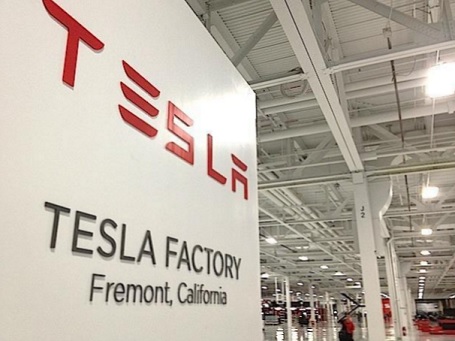 fired, including engineers, managers, and factory workers. Tesla wouldn’t say how many employees were let go, although the company expects employee turnover to be similar to last year’s attrition. They were not layoffs, the company said, but were dismissals based on a company-wide annual review. In interviews with the newspaper, former and current employees said there was little or no warning was given prior to the dismissals. “As with any company, especially one of over 33,000 employees, performance reviews also occasionally result in employee departures,” a Tesla spokesman said. “Tesla is continuing to grow and hire new employees around the world.”
fired, including engineers, managers, and factory workers. Tesla wouldn’t say how many employees were let go, although the company expects employee turnover to be similar to last year’s attrition. They were not layoffs, the company said, but were dismissals based on a company-wide annual review. In interviews with the newspaper, former and current employees said there was little or no warning was given prior to the dismissals. “As with any company, especially one of over 33,000 employees, performance reviews also occasionally result in employee departures,” a Tesla spokesman said. “Tesla is continuing to grow and hire new employees around the world.”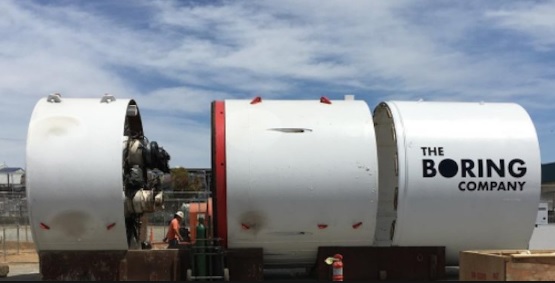 Washington, D.C. “Just received verbal govt approval for The Boring Company to build an underground NY-Phil-Balt-DC Hyperloop. NY-DC in 29 mins,” he tweeted yesterday. He later tweeted out that formal approval with the Trump administration is still needed, but after discussions they’ve had, he’s confident the project will be able to move forward. That could bring fast Hyperloop-like trains to Los Angeles and important transport routes on the east coast.
Washington, D.C. “Just received verbal govt approval for The Boring Company to build an underground NY-Phil-Balt-DC Hyperloop. NY-DC in 29 mins,” he tweeted yesterday. He later tweeted out that formal approval with the Trump administration is still needed, but after discussions they’ve had, he’s confident the project will be able to move forward. That could bring fast Hyperloop-like trains to Los Angeles and important transport routes on the east coast. Automobiles division is concerned that most U.S. consumers will be confused or concerned about having to charge for the first time and be subject to range anxiety. Plugging in is less of a worry in California, which has made up about half of U.S. plug-in vehicle sales. Still, it is possible to occasionally see Chrysler billboard ads in the state that only identify the Pacifica as a hybrid.
Automobiles division is concerned that most U.S. consumers will be confused or concerned about having to charge for the first time and be subject to range anxiety. Plugging in is less of a worry in California, which has made up about half of U.S. plug-in vehicle sales. Still, it is possible to occasionally see Chrysler billboard ads in the state that only identify the Pacifica as a hybrid.